A question on The Burdie and Barney podcast during our discussion with former England Premier League and 2006 World Cup goalkeeper Shaka Hislop lingered long after that episode was over:
Have we been developing players? Or were we just blessed with talented players previously and, now, not so much?
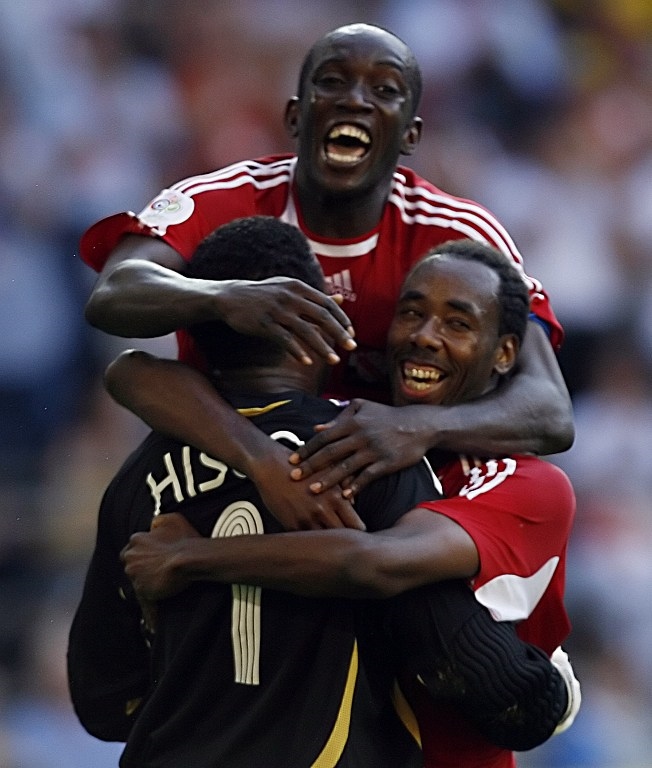
Harford worked as a tour operator for the 2006 World Cup while his friend and business partner, Bruce Aanensen, was the Soca Warriors team manager.
(Copyright AFP 2014/ Aris Messinis.)
At the time, I made it clear that I didn’t believe we were producing players. Later on, as I mulled over the chat, I thought an even better question to test the validity of my point was: How are players developed, and are we following the best practices?
For the purpose of this piece, I have tapped into conversations I held with—and information from—UEFA, USSF and CBF ‘A’ licensed youth coaches in Canada and North America, including Michael Bunel who I met during an International Coaching Symposium in Florida in 2019.
Bunel is credited with the development of players such as Jean-Alain Boumsong, Paul Pogba, Benjamin Mendy, Dimitri Payet, Lassana Diarra and Riyad Mahrez, who were under his guidance in most cases from 12 -years-old.

(Copyright Franck Fife/AFP 2018/Wired868)
I also sought to familiarise myself with the work that countries like Honduras, Belgium, Iceland and England have done to turn their football programs around. Programs that were floundering are now bearing fruit.
It may be argued that none of those countries have won the World Cup, European Championship or Gold Cup; but what cannot be argued is they have all started to consistently produce higher quality players and/or routinely qualify for major tournaments.
Let me take this opportunity to say that this article was not written to pour scorn on any local coach, club or administration. We gain nothing from that. The article does however have examples of what I see as wrong with our approach.
My hope is that by highlighting such things, a discussion to address them can begin.

St Kitts and Nevis eliminated the Women Warriors in the Caribbean qualifying phase.
(Copyright Daniel Prentice/CA-Images/Wired868)
In 2018, I was fortunate enough to accompany seven North American academy and collegiate coaches on a workshop tour of the Atlético Madrid FC training setup at Majadahonda, Madrid. For eight days, we were afforded access to all the teams and had sessions with the technical staff for each age group, where the discussions centred around youth player development.
It is here that I first saw a clear difference between player development at top level teams and what takes place by and large in Trinidad and Tobago.
The developmental cycle of a player is broken up into three distinct stages:
Coordination Stage (Ages 6-12)
Here, the coordinating talent and creativity unique to each player is born. At the early range of this age group, players are allowed to discover what happens while interacting with the ball—running with it, stopping it with different parts of their feet, etc.

At the elder ages, players would be shown feints, turns and dribbles. These tricks, in addition to the creativity they unlocked naturally from their attempts at ball manipulation, identify what the player’s virtues are.
There is no pressure at this stage of development, as that would inhibit the player’s freedom to explore. In Europe, because the love of the game passes from generation to generation, this stage may take place informally at home, in the garden, or in a park.
In North America, where there isn’t a strong history with the game and most parents have not played, this stage almost always takes place at a club or academy level. Still, the underlying theme is self discovery in a pressure-less environment.
Ideally, our players should learn the game on artificial surfaces or proper fields, where the true roll of the ball encourages them to play with their heads up with less fear of a bad bounce.

Cognitive Stage (Age 12-16)
Here, coaches begin to teach the game to players who would have already learnt how to dominate the ball rather than let the ball dictate to them—although the refining and perfecting of ball-handling skills never stops.
The game is now taught to the player along the concepts of time, space and deception (such as masking a pass). The underpinning belief is this: the more information one has as a player, the better decisions one makes, and the better soccer/football player one becomes.
It is at this stage the coach’s influence has to be strongest as the player’s assimilation of concepts is the focus here. A player must understand the choices available in certain scenarios and why to choose one over another.
Games are now used to verify how well concepts were taken onboard:

(Copyright Allan V Crane/CA-images/Wired868)
Does the wingback on the weak side (the far side of the field in relation to the ball) understand where he needs to be? Does the central midfielder understand if the defender is marking the striker she intends to pass to on the striker’s right foot that she needs to pass to her left?
If the coach did a good job creating the training environment where these scenarios occurred and the player is a fast learner, then the player will improve.
This is where the likes of Toni Kroos (Real Madrid), Sergio Busquets (Barcelona), Thomas Muller (Bayern Munich), and Marco Veratti (PSG) learn how to solve problems.
While all stages are important, the cognitive stage should not be sacrificed. Coordination and competitiveness can constantly be worked on and improved, but a player who has not developed the ability to make the correct decisions will hardly ever make it to the professional ranks.
Games here are not about results, but creativity and comprehension of concepts.

Competitive Stage (Ages 16-18)
By now, players should have developed a playing identity and understand the concepts and fundamentals of the game. Competition is the main development tool here—as players are exposed to several different styles of play—but work still continues on technique relevant to the player’s positions.
It is at this stage where determination is made on whether a player is ‘good enough’ to continue pursuing a career in the sport, or if he will instead become a recreational player.
In Europe, if deemed good enough, the player will generally continue his development with the reserve team, in a competition-oriented setting that mimics the top flight of professional football. Many do not progress further.
(Exceptional talents like Kylian Mbappé, Lionel Messi, Dwight Yorke, Levi Garcia, or Christian Pulisic will get minutes with the first team by this stage.)

Garcia was 18 at the time.
(Copyright AFP 2017/Jack Guez)
(Developmental components)
When one speaks about developing a player there are four developmental components in which one hopes to effect improvement, which are: technique, tactics, fitness (conditioning and strength work) and psychology. These are introduced primarily in the cognitive and competition stages.
Technique covers the range of actions on the ball that have to be mastered, such as receiving or preparation, passing, dribbling, screening, heading, and shooting. The more time a player spends repeating these actions, the better their technique becomes.
In an 11v11 game, the number of touches that a player gets are limited, so training sessions provide the best opportunity to challenge players to improve their skills.
Tactics refers to the player’s decision-making ability in each situation, such as when and where to dribble or pass, and position and movement off the ball. These decisions are taught against the principles of attack which include mobility, support, width, penetration and improvisation.

Fitness, by way of brief explanation, involves stamina, power, speed, flexibility and agility required to play the game and helps protect against injury.
Psychology at the youth level should revolve around enjoyment, social interaction and a positive self-image—although winning is also a motivator.
(How does our developmental work compare?)
Let’s look at our work in the three identified developmental stages in Trinidad and Tobago.
I will stick mainly to Trinidad, as I am not sure if the same mistakes are made in Tobago and would not want to offend by including them erroneously. However, I have not seen the talent coming from Tobago that I did in years past, which might indicate that they also lack effective development programmes.

(Copyright Allan V Crane/CA-Images/Wired868)
The early part of our coordination stage, up until the age of eight, is one that we have historically gotten correct. Football is such a big sport on the island, our players are introduced to a ball at an early age, through an adult family member or sibling, and cut their teeth playing small goal or ‘sweating’ on the road, or in a court or park.
In modern times, one is hard-pressed to see children playing small goal within their community. So our first contact with the ball now comes in the structured academy setting rather than informally.
As a result, we risk losing the spontaneity and creative dribblers we had by the dozen—if we haven’t already.
The second half of what should still be the coordination stage tends to morph into tactical work (stage two) and competition (stage three) in Trinidad. You would remember that this stage was solely for familiarity with the ball and allowing players to discover themselves in a pressure-free environment.

The outing was Trinidad and Tobago’s last warm up before the Germany 2006 World Cup.
(Copyright AP Photo/Kai-Uwe Knoth)
So what we have in fact done is take three separate stages of development (coordination, cognitive and competition) and compressed them into one, with the pressure of the competition stage permeating almost the entire process.
The Republic Bank Cup starts with players just under 11 years old; the Youth Pro League at 13. There are other competitions such as the Primary School Championship that has players even younger.
These are ages when players should be free from inhibition, as they work on the technique required to play the game. Instead we are playing for a trophy and medals, with parents screaming at coaches, opposing players, referees, their children’s team mates and, yes, even their own children; while coaches are judged as great if they win and horrible if they don’t.

QPCC won 5-4 via kicks from the penalty spot.
(Courtesy Allan V Crane/CA Images/Wired868)
In comparison, Atlético Madrid’s games in those age groups are played with no standings posted, points or tallied goals.
A full schedule of games are played and keenly contested, yes, but without the inflated pressure caused by a trophy. This allows players to solve problems without pressure from even their coaches, who know their jobs and reputations do not rely on the outcome of the game.
Do our youth coaches put development before results? Can they afford to?
Do the parents care that their children’s range of passes has not improved over the last year? Or does it only matter that they are able to tell co-workers on Monday that their child’s team won the under-11 title?
The rest of the football world has long since recognised that games and competition are tools for player development. But many in Trinidad and Tobago seem to believe that the game and the competition themselves are development.

(Courtesy Sinead Peters/Wired868)
I’d like to close part one by looking at the difference in how teams in Trinidad and Tobago and abroad develop player pools.
In 2015, I was doing a coaching license in Orlando conducted by the NSCAA (since rebranded USC) and was invited to watch Major League Soccer (MLS) team Orlando City take new entrants into their academy: a total of just under 2,000 boys and girls showed up.
Those selected were integrated into multiple teams in each age group, based on ability. This increased the potential pool of players from which they hoped a gem or two would be unearthed. This was one club in one state, in a country with 50 states; and it was something they were all doing, which was encouraging more boys and girls to take up the sport.
Some clubs in Florida like ACYS, which had Trinidad and Tobago coaches Ashton Baptiste and Rodney Rooplal on their staff at the time, had as many as four teams per age group.

(Courtesy Sean Morrison/Wired868)
I saw this same approach at Atlético Madrid and was told about it in Canada in recent times. In Belgium, they have taken this approach a step further by instituting a second/shadow team in each age group at national level.
Again, Trinidad and Tobago’s approach runs counter to the best world trends. Once more, this was not always the case.
When I entered secondary school in the 1980s, the Colleges Football League (as it was known then) allowed schools to field as many teams as they chose to register in the age groups.
So Fatima, for example, had two under-14 teams; two under-16 teams, and two under-19 teams. Players who were not technically or tactically up to speed, or physically too small or weak to play in the ‘A’ team were allowed to train with and play in the ‘B’ team.

(Copyright Allan V Crane/CA-Images/Wired868)
This approach allowed for late bloomers and children who were too small to compete for a spot on the ‘A’ teams but undoubtedly had talent.
Fast forward to 2015 and at a zonal Secondary Schools Football League (SSFL) meeting I was informed that schools are only allowed to register one team in each of the divisions.
Over the August holidays at the school where I coached, we had over 100 form one boys who signed up to join the team and were excited to play or learn to play football. But instead the zonal arm of the governing body decided we could only enter one team.
We were not the only school in the zone with the issue, although we certainly had the largest number of boys who, because of this decision, had to be turned away.
The reason given by our zone? Schools that only had enough boys to field one team were of the belief that our school would use boys interchangeably between our ‘A’ and ‘B’ teams to deny them the opportunity to win the title.

Lawrence did not make the Malick first team as a schoolboy but went on to become one of his country’s most recognisable players.
(Copyright AFP 2017)
So instead of having a big pool of players, we had to have screenings to select 25 boys—to the exclusion of others who showed talent. Some of those we turned away were lost to other sports, others were lost to sport altogether.
It seems we no longer see merit in catering for the late bloomer. The lure of winning a trophy is more important.
Had Belgium stars Kevin De Bruyne or Dries Mertens, two famous late developers, been born in Trinidad they may have been lost to world football with this approach.
How is it that large nations are encouraging more and more youths to take up the sport while a country of 1.4 million is doing its best to restrict the player pool?

(Copyright FIFA/Getty)
The SSFL is not the only guilty party. I watched as the Trinidad and Tobago Football Association (TTFA) decided to channel its resources into an elite program. It was a development plan built on exclusion.
I firmly believe one should look around to see what the best in your field are doing, hold conversations or seek their guidance, and then implement based on appropriateness.
Was this done before the TTFA embarked on its elite program? Nothing about its approach suggests the answers to those questions were ‘yes’.
If the TTFA’s Home of Football and Elite Programme were supposed to mirror the success stories from Clairfontaine in France and St George’s Park in England, then the persons responsible should have done better research.
Before opening St George’s Park in 2012, the England FA had been working since 2002 on then technical director Howard Wilkinson’s brainchild, which involved improving coaching education at grassroots level and going out into the communities to encourage more kids to play.

(Courtesy Allan V Crane/Wired868)
By the time their Elite Player Performance Program began at St George’s, players in the communities had already been exposed to the curriculum for years and the best could be selected to start. In other words, they first increased their pool of young players and exposed to them to an improved coaching curriculum before selecting the most talented of the lot.
Another former technical director Trevor Brooking, who oversaw the transitionary period, said, ‘[…] we tried to introduce [a style of play] at the grass roots. Then St George’s Park was the base we needed… where national coaches would work together learning, speaking around the table’.
If the coaching education was not put in place and the effort at community level to increase player participation were not undertaken, they would have had a complex with no real gains.
A building is not going to develop players; it has to be part of a bigger plan. Since the opening of St George’s Park in 2012, England has produced a number of exciting young players.

(Courtesy Allan V Crane/TTFA Media)
Iceland has no St George’s Park, Clairefontaine or Home of Football. Yet it now holds the title of being the smallest nation ever to qualify for the World Cup, which we once laid claim to.
How did an island with a population of a quarter our size (335,000 citizens) qualify for the Euro 2016 and Russia 2018 World Cup?
In 2000, Iceland set up an open, hugely popular training scheme, which produced 700 Uefa licensed coaches. It was also agreed that from the under-10 level and older, a Uefa ‘B’ license was needed to coach players.
Again the same two simple ingredients are present: improve the standard of coaching; and encourage as many kids to play the sport as possible.

This is in stark contrast to decisions taken by the SSFL in its recent past or by the TTFA with its Elite Programme.
How could we have an elite programme without first encouraging more boys and girls to take up the game? How could we call a programme ‘elite’ when we haven’t scouted Tobago—home of Dwight Yorke, our most successful footballer ever?
Editor’s Note: Click HERE to read part two of Barney’s bible as Wayne Sheppard touches on the ideal training to game ratio, Trinidad and Tobago’s youth football calendar and the repercussions of the SSFL’s fixture list.
Wayne Sheppard is the Arima North Secondary technical director and ex-Men’s National U-15 assistant coach. He holds a TTFA ‘B’ coaching license and diplomas from USC, CANOC and TTOC.
He is the co-host of the Burdie and Barney Show and a former T&T National U-23 and U-17 player.
 Wired868 Wired868 for smart sport news and opinion
Wired868 Wired868 for smart sport news and opinion
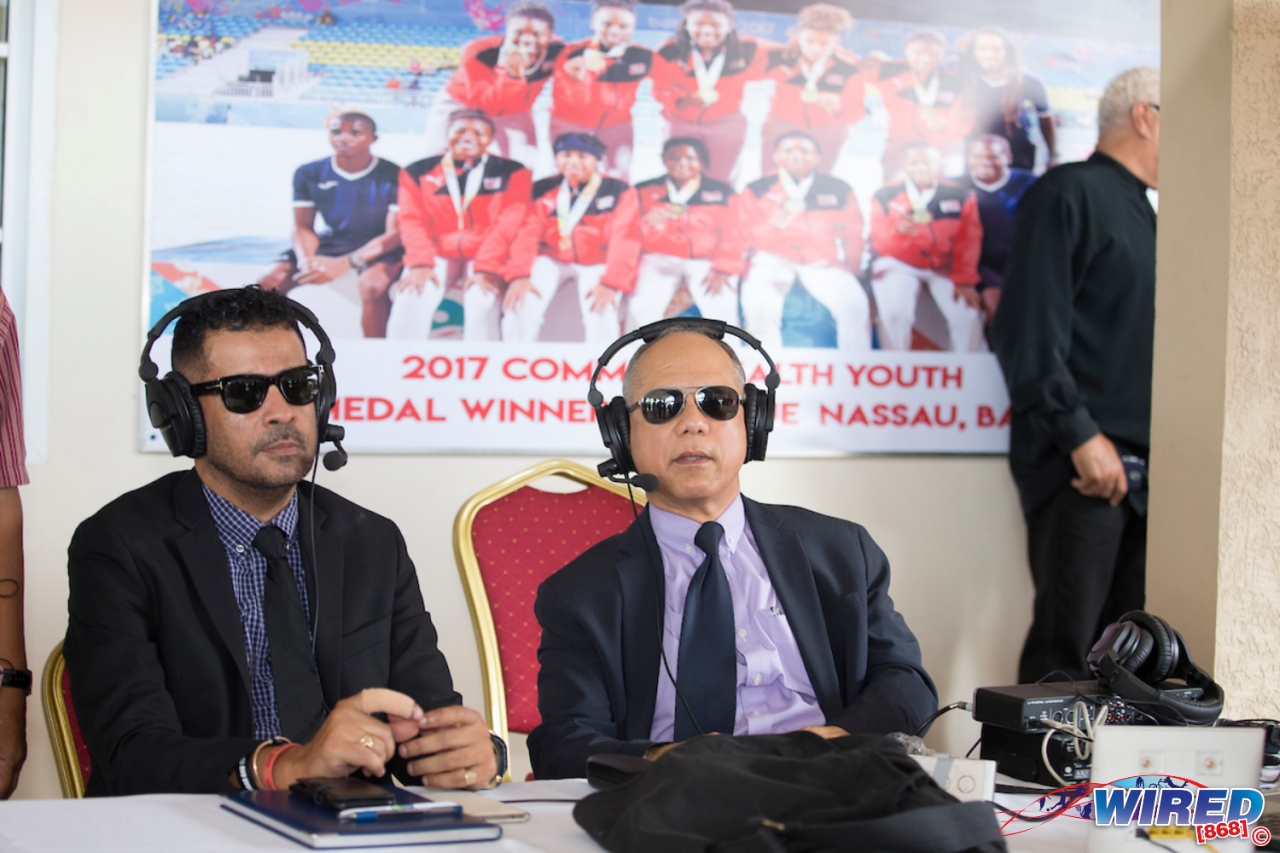
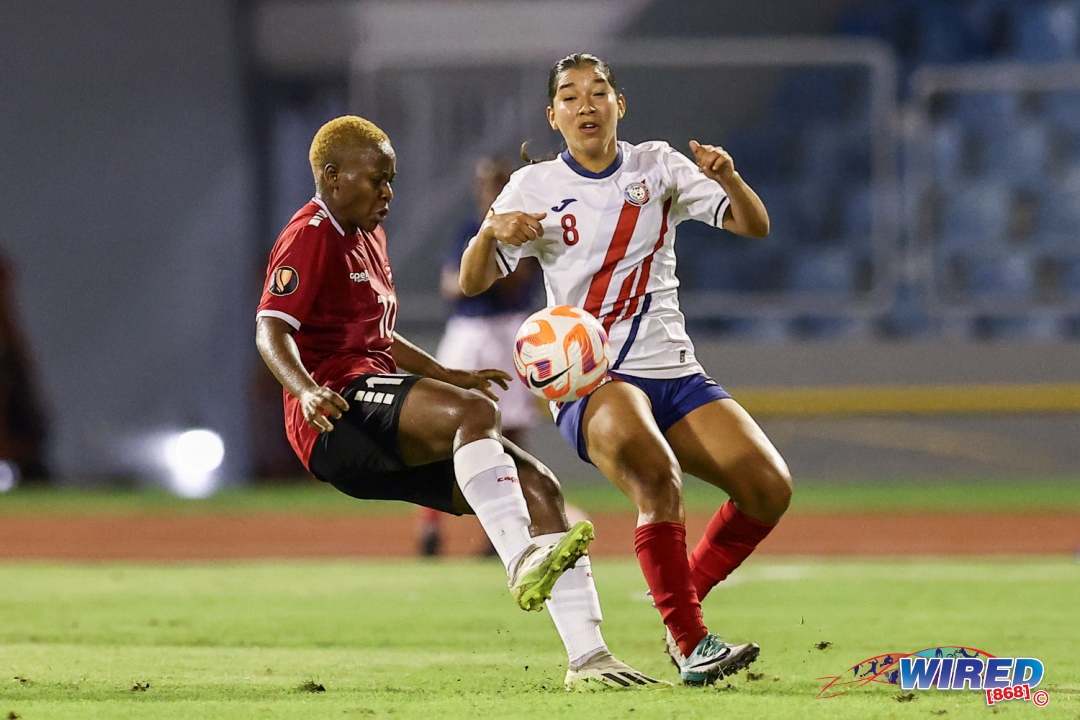
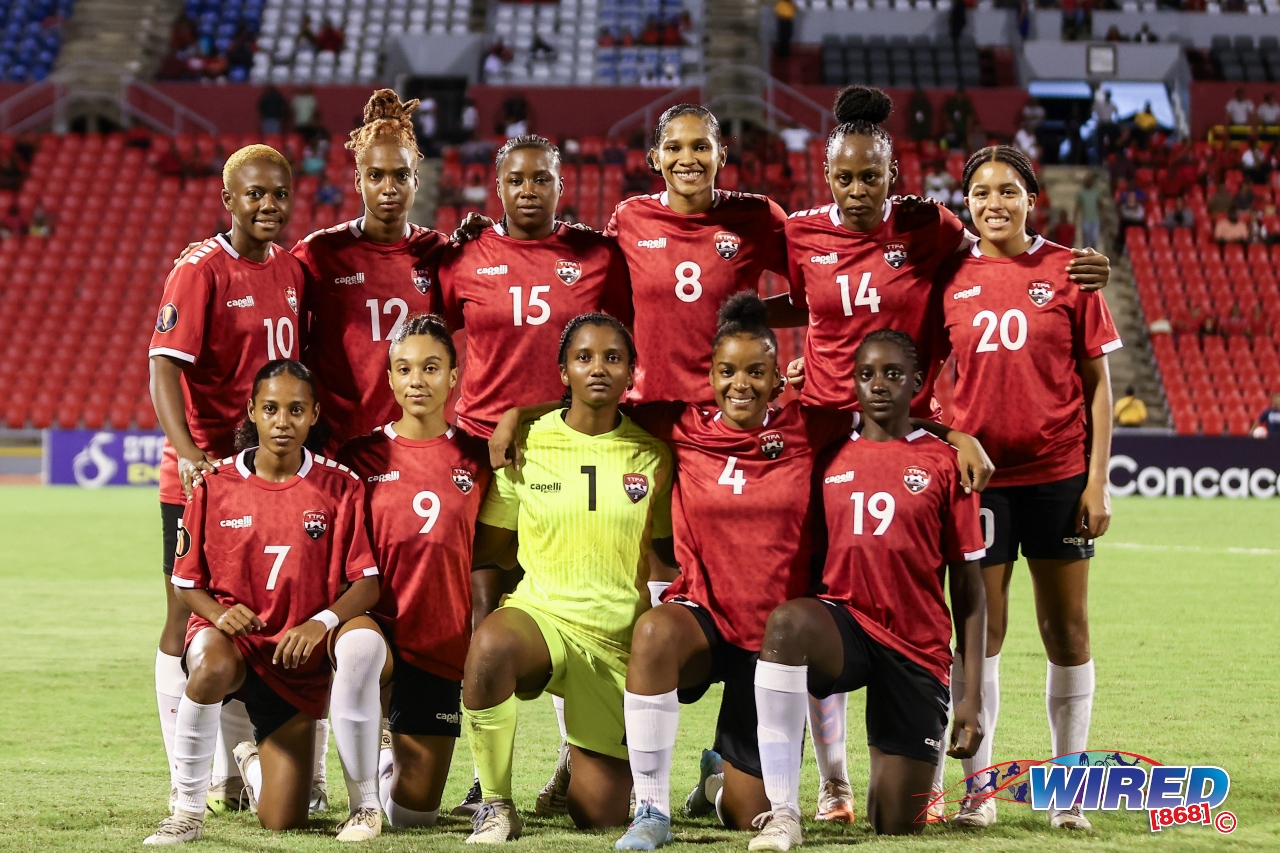

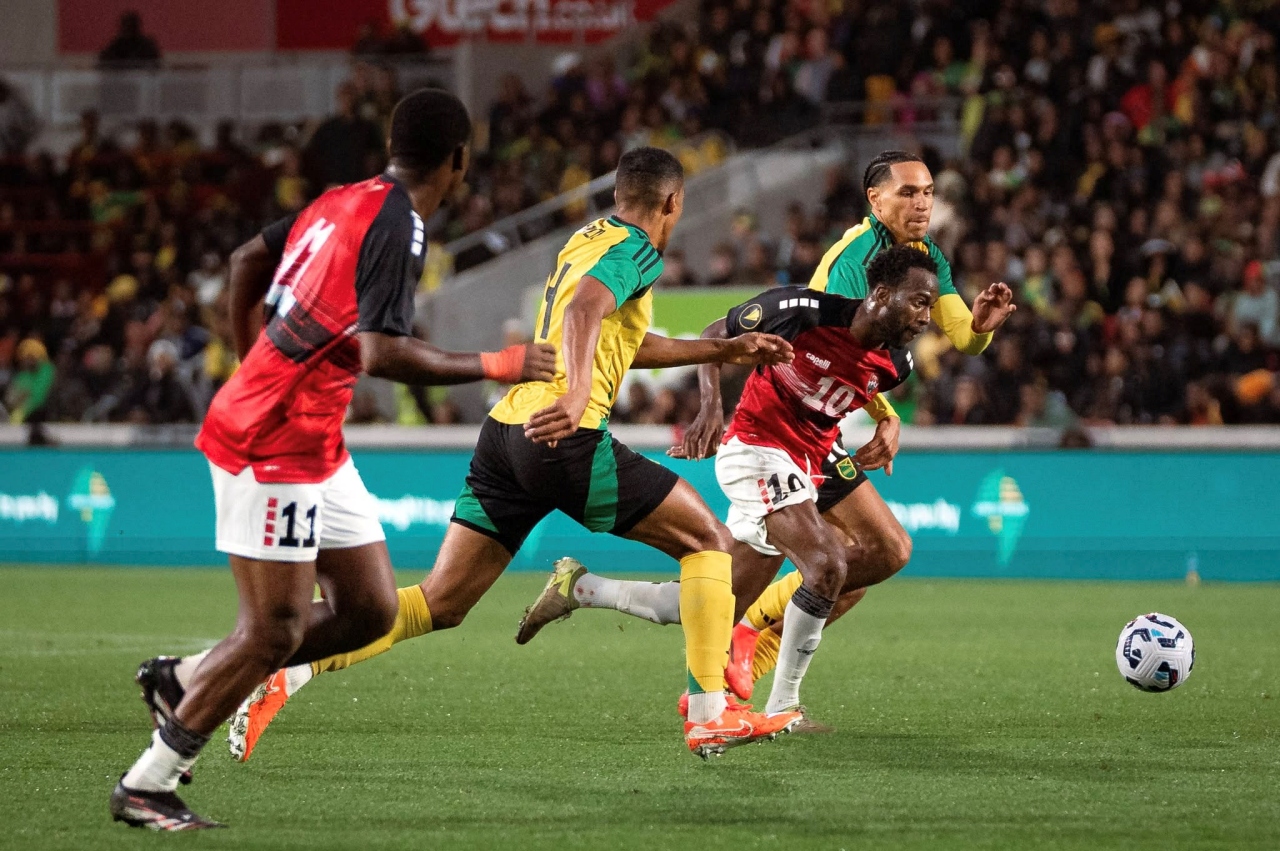
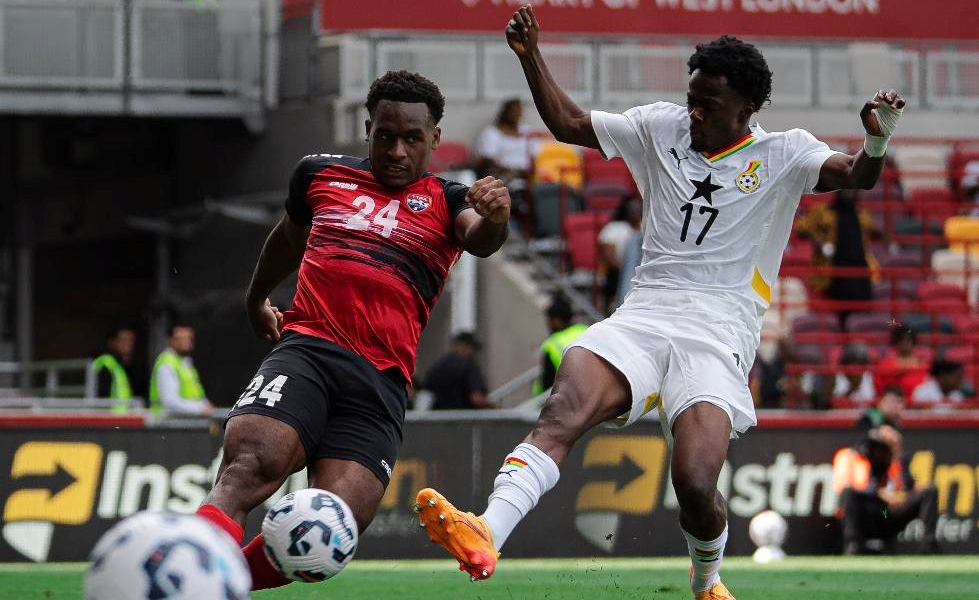
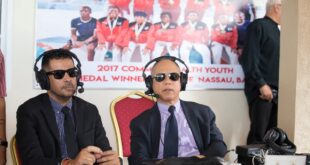
The major problem with this excellent piece, bro, is that the people it is intended to help are not going to get beyond the first paragraph.
That has nothing to do with you or your work but with your erroneous inner conviction that Trinidad is a real place.
Thank you for the positive comment. It is appreciated. Since the article was posted i have received a number of calls and seen a number of comments posted from persons. Either saying that they currently employ what I have spoken about and or it is nothing new I’m putting forward.
Well to those who are doing the things already I salute you but then we need to quality check ourselves because if we are doing all the right things but still not producing the right results (quality players) then maybe we just THINK we are doing things correctly when we really are not.
To the group who says I have not said anything new I will say that at no time did I say I was delivering any groundbreaking news. I actually quoted the names of the persons that I spoke to and gathered information from. I made a comparison of what I saw from them and what I saw being done at home. So this was never about me being the smartest. It was about me educating myself on developmental best practices and sharing that information .
But my real question to that group is that since we already know all of this stuff then why are we not implementing it? So we are saying we know the correct thing but we insist on doing something different? I heard the over arching argument about the TTFA and funding etc and I get that.. But plenty correct things can be done at the club/academy level and we are not doing it there. So what is the real purpose of us “knowing this already”….and dismissing it as “nothing new”?. What is the real purpose of having knowledge but not implementing it?
That one beats me
The taste of the pudding comes with the eating, not with reading of the recipe.
For as long as we have to be TOLD those things are being done without seeing the effects those things, properly done, inevitably produce, it’s probably all old talk, the area where we are right up there with the best in the world.
You warned me from jump.
And it remains, of course, true that some of them might well have reached their conclusions and communicated same after reading your first paragraph.
T&T, remember, is NOT a real place.
If you are still unsure, go and watch the parliamentary channel.
Or if you prefer, read or listen to Terry Fenwick’s assessment of one of his team’s games.
Excellent article. Well researched with culturally appealing photos. I wish i could read articles like these in our local papers. Saw Aston Villa Education coach with another model yesterday at the TTFA workshop. Do we have a national ciaching model? Do coaches use a standardised curriculum? Great effort by TTFA to transform football here.